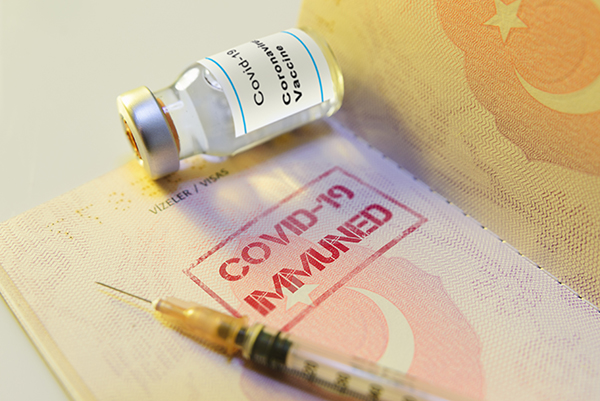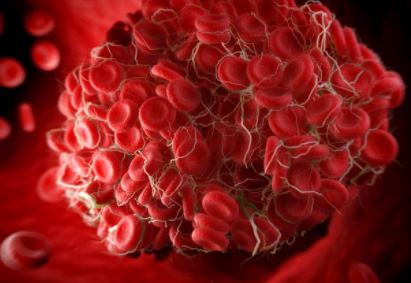Study: Walking at least 45 minutes a day can help prevent cancer
11/23/2021 / By Zoey Sky

A study on “inactivity, exercise and malignancies” found that over 46,000 cancer cases in America could have been prevented yearly if more people walked for at least 45 minutes a day.
The study was conducted by researchers from the American Cancer Society (ACS) and Emory University in Atlanta and published in the journal Medicine & Science in Sports & Exercise.
For the study, the researchers examined cancer incidence and the physical activity habits of almost 600,000 American men and women in every state and the District of Columbia. Findings revealed that at least three percent of common cancers in the country are associated with inactivity.
PAF, cancer and regular physical activity
The study results suggest that simply getting up and moving can help tens of thousands of adult Americans prevent cancer as they age.
There are many studies on exercise and its anti-cancer benefits. In earlier research, findings revealed that physical activity can help change the immune system to “amplify the body’s ability to fight tumor growth.”
Research has also shown that exercise can help boost the activity of certain immune cells that target cancer cells. Additionally, physical activity is linked to longer survival in those with certain forms of cancer and helped increase the levels of inflammatory substances that can prevent cancer cell growth.
Several studies have also confirmed that being inactive may increase your risk of developing different types of cancer. However, researchers still have more to learn about how those risks translate into actual cases or “how many people each year are likely to develop cancers closely linked to moving too little.”
For the study, the researchers used a sophisticated type of statistical analysis called population-attributable fraction (PAF) to measure connections between cancer and inactivity.
Population-attributable fraction is a mathematical method that allows scientists to estimate how many occurrences of a disease or drug responses or other biological reactions within a larger population are caused by a particular behavior or other factors.
For example, PAF can help experts determine how many annual cases of colon cancer, out of all the known instances of the disease each year, are linked to factors like smoking, alcohol, fatty foods or over-sitting. (Related: Reduce your colorectal cancer risk by up to 39% with 60 minutes of daily physical exercise.)
Inactivity and cancer risk
To determine the PAF of cancer due to inactivity, the ACS researchers first pulled anonymized data from the U.S. Cancer Statistics database about national and state cases for all Americans 20 and older between 2013 and 2016.
The scientists focused on two things:
- Total cancer cases
- Seven types of cancer that in past studies were closely linked in part to an individual’s activity (or inactivity): bladder, breast, colon, endometrial, esophageal, kidney and stomach tumors
The research team also analyzed how much American adults claim to move by reviewing over half a million replies to two large federal surveys. Both surveys asked people their preferred methods of exercise and how often they exercise.
Responses from adults in every state were then grouped based on whether or not people met the ACS recommendations for physical activity. Those guidelines recommend at least 300 minutes (five hours) of moderate exercise, such as a brisk walk, every week to lower cancer risk.
The scientists also adjusted these statistics for body mass and other factors. Combined with additional data about cancer risks, the data was then entered into an equation that revealed the PAF for cancers linked to inactivity.
That number was 46,356 (three percent) of all cancers yearly, excluding non-melanoma skin cancers.
After examining the individual types of cancer, stomach cancer had the highest link to inactivity, with about 17 percent of all cases annually linked to not moving. Meanwhile, only four percent of bladder cancers were associated with inactivity.
The numbers varied by state, totaling almost four of cancers in many Southern states, where residents often reported that they get “relatively little exercise.” In most of the Mountain West, only two percent of cancers were linked to inactivity as the area has “relatively active populations.”
Staying active is key to cancer prevention and overall health
These figures can be still be lowered with healthy lifestyle changes and regular exercise.
Adair K. Minihan, an associate scientist at the ACS and leader of the study, advised that regular physical activity can “potentially prevent many cancers in the United States.” She added that if all Americans who are fit enough to exercise “started walking for an hour on weekdays,” the 46,356 cases linked to inactivity should theoretically disappear.
Despite the good news, the researchers said that cancer remains a complex disease with “overlapping, entwined causes,” with inactivity playing only a small potential role. Statistical risks never drop to zero and a lot of very active people can and do develop cancer, said Minihan.
Minihan also highlighted that the goal of the study isn’t to “shame people for not exercising” or suggest that someone developed a tumor for occasionally skipping the gym. There are various obstacles to exercise and different factors also go into who develops cancer.
The study results suggest that if you can incorporate at least 45 minutes of simple exercise into your daily routine, you can help lower your risk of developing different kinds of cancer.
Exercise guidelines for those with cancer
Studies have found that moderate and vigorous physical activity can help reduce the risk of bowel cancer, breast cancer and womb cancer. Staying active can also help prevent obesity, a factor linked to a higher risk of getting 13 types of cancers.
If you are already diagnosed with cancer, exercise still offers many health benefits. Follow the guidelines below if you want to start being more physically active.
- If you’re having treatment or have recently finished treatment, you can start exercising if you are well enough to do so.
- If you’ve never exercised, gradually build up your exercise routine. Don’t do too many strenuous activities on the first day because you might feel very tired and sore the next day.
- Don’t feel like you always have to do more than the day before. It’s normal to feel like you have less energy on some days.
- Start with short chunks of 10 to 15 minutes of gentle activity. Slowly build up your routine until you reach your target.
- Stay active throughout the day and break up periods of rest with chores like ironing or mowing the lawn.
- Walk to work instead of driving or using public transport. Another option is to get off at a bus stop a few stops and walking the rest of the way home.
- Try activities that you enjoy and are more likely to keep doing regularly.
Exercise for at least 300 minutes a week to lower your cancer risk and boost your overall well-being.
Sources include:
Tagged Under: alternative medicine, exercise, fitness, lifestyle change, men's health, natural medicine, physical inactivity, research, women's health, work out
RECENT NEWS & ARTICLES
COPYRIGHT © 2017 NATURAL CURES NEWS




















